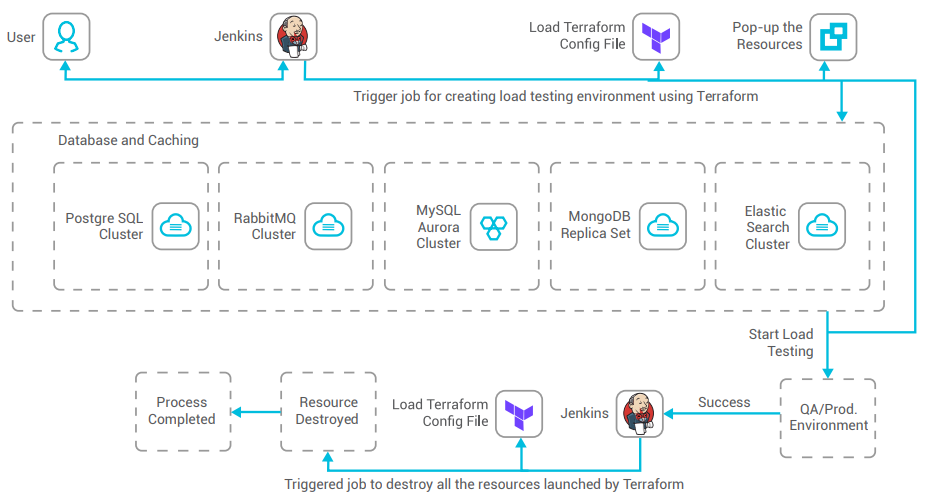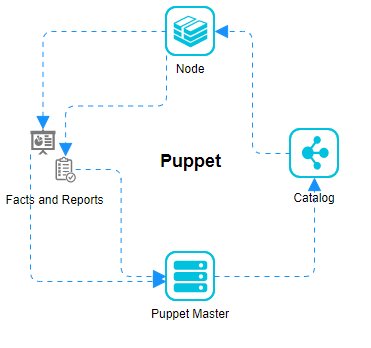By Shantanu Kaushik
2021 is underway. DevOps is influencing businesses with its consistent cultural shift results. In this article, I will explain what a DevOps toolchain stands for and how Alibaba Cloud has made significant improvements with tool delivery in association with the open-source community.
A DevOps toolchain is a combination of tools to achieve several tasks during the development phase, testing phase, maintenance phase, release phase, and feedback. These tools are most effective with DevOps as they have to follow the principles of the agile model of software development. With DevOps, the teams are required to focus on continuous integration and continuous delivery. A DevOps toolchain is there to execute the process of CI-CD smoothly.
The DevOps toolchain has to be customized to fit the needs of the business. Every tool within the DevOps toolchain is well-curated. Every tool should complement the business values to assist and comprehend the changing business. The DevOps toolchain is put in place to ensure a healthy software development lifecycle.
The DevOps toolchain assists different teams to execute complex tasks easily. A standard DevOps practice can include one or more toolchains to focus on different approaches in a DevOps lifecycle, including integration, automation, collaboration between teams, and feedback.
Learning from the principles of software development, it is safe to say that any assembly of software tools also requires careful planning and maintenance during and after the operation. Even the products used for maintenance require O&M. The DevOps toolchain will also require certain resources to work flawlessly. It will also have maintenance requirements.
A strategy is the basis of any software or application lifecycle’s success. A very subtle association between an application, its priorities, and the productivity lifecycle depend on how well the product was strategized and how much valuable time was spent at the pre-production table.
Organizations should be prepared to allocate the necessary budget for DevOps for different phases of the practice. A DevOps toolchain requires a level of adoption by the DevOps teams. The focus should be on the standardization of resource policies and the adoption model throughout the organization. Focus on how and what you want your toolchain to achieve, containers, microservices, security, and whatever else you need the toolchain to facilitate.
Initially, the DevOps teams might not feel the need to adopt the newly presented toolchain, but you must focus on promoting its usage with the formulated strategy.
Standardization is the most important bit associated with a DevOps practice. The DevOps toolchain has to be in sync with other tools and practices at all levels within the DevOps pipeline. Following a set of standardization strategies will allow developers, operation engineers, and testers to collaborate without wasting useful resources on iterations.
A DevOps toolchain is a simpler way to shape the entire DevOps process. The only point here to consider is the type of toolchain required for your DevOps practice:
1. Plug-and-Play Toolchain
The plug and play toolchain provides a standard set of tools that may fit your business needs. A plug-and-play DevOps toolchain could be the answer for your organization if you can refer to a case study of another organization with a similar set of business values as your own. The biggest benefit of a plug-and-play toolchain lies in its simplicity and its ability to be replicated across different teams quickly.
2. Custom Toolchain
A custom DevOps toolchain can be used to orchestrate a set of tools for functionality that the plug-and-play toolchain cannot offer. A custom solution can be curated to work with your DevOps practice if your business values differ from most generic practices of other businesses.
As the case presents, a plug-and-play solution offers a more standardized practice with a better possibility of seamless integration than a custom toolchain. However, the custom toolchain offers a better and more precise functionality that is practice-specific.
A DevOps toolchain requires maintenance just like any other practice with an association of tools from multiple sources. DevOps may use the Container Service with Kubernetes (ACK) or Docker and the implementation of microservices along the pipeline. You must maintain your DevOps toolchain to ensure a healthy application lifecycle with uninterrupted software delivery.
Continuous Integration, Continuous Delivery, and applied Continuous Testing can only be achieved through a perfectly synced toolchain to provide proper automation throughout the entirety of the DevOps pipeline.
In a previous article, we had a detailed discussion about why the defect escape rate is important within your DevOps pipeline. You can read the article here: Defect Escape Rate – Why Is It Important?
One of the primary uses associated with the DevOps toolchain is to maintain quality assurance. Utilizing tools to detect and resolve errors quickly is among the prime movers associated with QA. Configuring the tools within your DevOps toolchain will ensure an automated, precise, and capable QA practice with a better user experience.
A standardized DevOps pipeline will enable innovation and growth. The DevOps pipeline is all about enabling the automation of processes using tools for precise functionality. These tools can enhance the overall process and shorten the time from integration to release.
Beginning with the first step of DevOps, you need to come up with a strategy. You need project management tools to control the total practice and enable seamless collaboration between teams.
Repositories (like GitHub) and tools (like Slack) can be helpful here. GitHub can provide standardized control over how your source code is used within your DevOps pipeline. Alibaba Cloud provides seamless integration with GitHub to facilitate collaboration.
Maintaining a seamless CI-CD practice is the most essential bit within the DevOps pipeline. You can use the Kubernetes cluster to maintain a steady CI-CD cycle or deploy using Jenkins. Jenkins can be used to refine collaboration within development teams. The architectural representation associated with Jenkins and Alibaba Cloud is shown on the chart below.

Puppet is a flexible DevOps configuration management tool that is used to automate the delivery and operations side of the software delivery lifecycle (SDLC). It utilizes backend products like the Elastic Compute Service (ECS) to the fullest when deployed with Alibaba Cloud. Puppet can leverage the Alibaba Cloud IAC service for secure application delivery by the operations and development teams from anywhere.
Puppet expands on the possibility of increased productivity and manageability by sending out real-time alerts and generating detailed reports for the user to reveal and act on changes that require attention.

When it comes to configuration, we also need to mention Chef. Chef passes instructions to automate tasks for deployment, configuration, and management modules to define the Infrastructure as Code (IAC).
Ansible can be used for configuration and management to automate continuous delivery. It enables faster application deployment by providing automatic configuration management, cloud provisioning, and orchestration for the DevOps teams. It can also be used to write custom applications and re-configure machines.
A DevOps toolchain is an essential component for a successful SDLC. It helps teams collaborate, share, and envision a DevOps pipeline that is fully self-sufficient to provide an optimal CI-CD practice. Your primary focus should be infusing the best of industry tools to achieve a flexible and reliable environment.
Agile teams can move fast. A DevOps toolchain can help teams provide incident control and mix automation with team building for a better and more responsive DevOps pipeline.
Alibaba Cloud has deep-rooted itself within the open-source community to collaborate and standardize DevOps tool usage within its infrastructure to enable users to leverage the best of everything at every stage of the DevOps pipeline. Alibaba Cloud has extended support for the DevOps toolchain for containers, microservices, and DevSecOps for integrating security.
An Overview of How to Integrate 2FA in a VPN Gateway with iDaaS and Active Directory

2,593 posts | 791 followers
FollowAlibaba Clouder - March 10, 2021
Alibaba Clouder - February 7, 2018
Alibaba Cloud Community - March 2, 2022
Alibaba Cloud Community - February 8, 2022
Alibaba Container Service - August 5, 2025
Alibaba Clouder - January 4, 2021

2,593 posts | 791 followers
Follow ECS(Elastic Compute Service)
ECS(Elastic Compute Service)
Elastic and secure virtual cloud servers to cater all your cloud hosting needs.
Learn More DevOps Solution
DevOps Solution
Accelerate software development and delivery by integrating DevOps with the cloud
Learn More Alibaba Cloud Flow
Alibaba Cloud Flow
An enterprise-level continuous delivery tool.
Learn More Elastic Desktop Service
Elastic Desktop Service
A convenient and secure cloud-based Desktop-as-a-Service (DaaS) solution
Learn MoreMore Posts by Alibaba Clouder